Sevilla
Sevilla1 is on the left (east) bank of the lower course of the Guadalquivir, in Sevilla Province of the Andalucía (Andalusia) Autonomous Community of España (Spain). The city proper has 703 thousand residents2 and the metropolitan area 1.8 million.3 It has the world's largest Gothic cathedral, completed by the 16th century and containing the tomb of the explorer, Cristoforo Colombo.4 This was until recently also the tallest structure in the city. (The Cajasol Tower, completed in 2015, is higher.)5
The city was founded in Roman times and gained status in late Visigothic times when it was known as Spalis.6 After the Moslem conquest it was the second most important city in al-'Andalus (Islamic Spain); at this time it was called إشبيلية (Ishbīliya).6 The city gained prosperity when granted a monopoly of colonial trade by the Christian rulers of España (Spain), but lost status with the reduction of privilege, harbor silting and plague.7 Three buildings together are honored by UNESCO as a World Heritage Site: the Alcázar, a palatial fortress built in Moslem times and later used as a Christian royal residence; the cathedral, which has elements from Visigothic and Islamic times;8 and the Archivo de Indias (colonial archive), originally built for another purpose in the late 16 century.
| Year | Population | Political entity |
| 622 CE | 40,0009 | Regnvm Visigothorvm (Visigothic Kingdom) |
| 900 CE | 40,0009 | al-'Andalus (Andalusia) |
| 1000 CE | 90,0009 | al-'Andalus (Andalusia) |
| 1100 CE | 125,0009 | al-Murābiṭūn (Almoravid Empire) |
| 1200 CE | 150,0009 | al-Muwaḥḥidūn (Almohad Empire) |
| 1300 CE | 90,0009 | Corona de Castilla (Castile and Leon) |
| 1400 CE | 60,0009 | Corona de Castilla (Castile and Leon) |
| 1500 CE | 46,0009 | Monarchia hispanica (Spanish Empire) |
| 1600 CE | 126,0009 | Monarchia hispanica (Spanish Empire) |
| 1700 CE | 80,0009 | Monarchia hispanica (Spanish Empire)10 |
| 1800 CE | 96,0009 | Reino de España (Kingdom of Spain) |
| 1900 CE | 148,0009 | Reino de España (Kingdom of Spain) |
| 2014 CE | 1,800,0003 | Reino de España (Kingdom of Spain) |
External references
An interior court of the Alcázar, Sevilla (Seville), Sevilla Province, Andalucía (Andalusia) Autonomous Community, España (Spain)
Historical maps
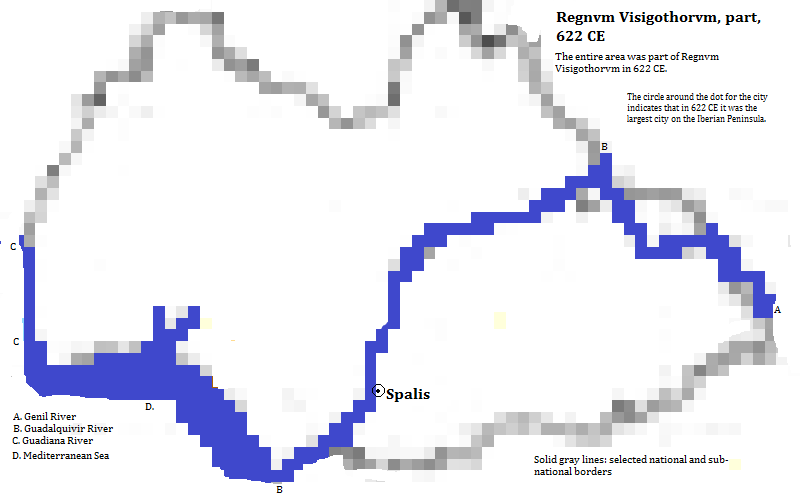
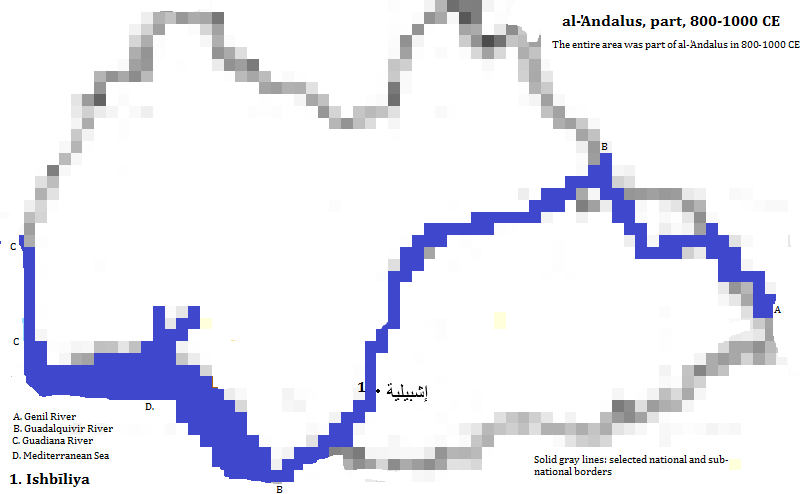
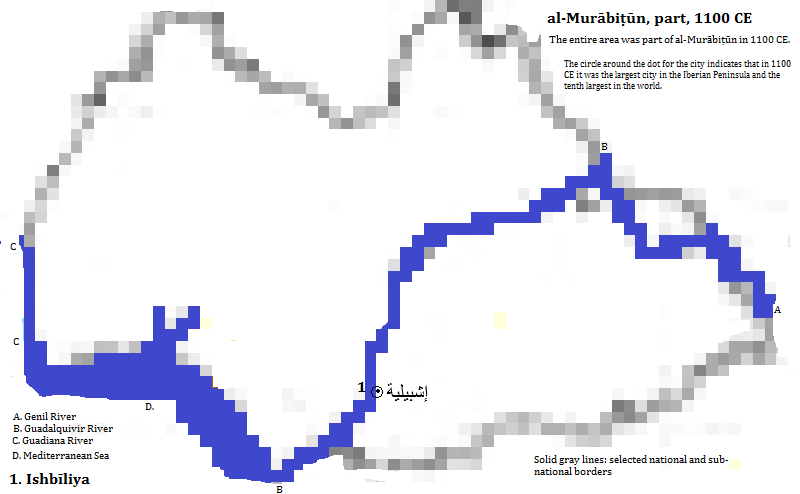
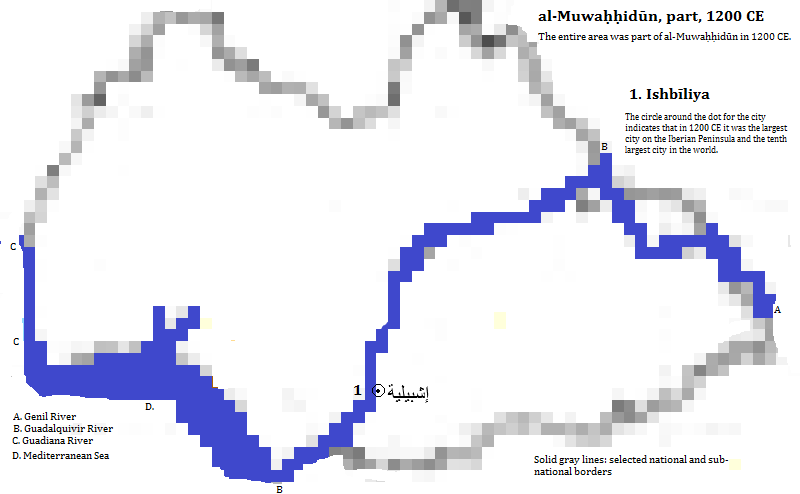
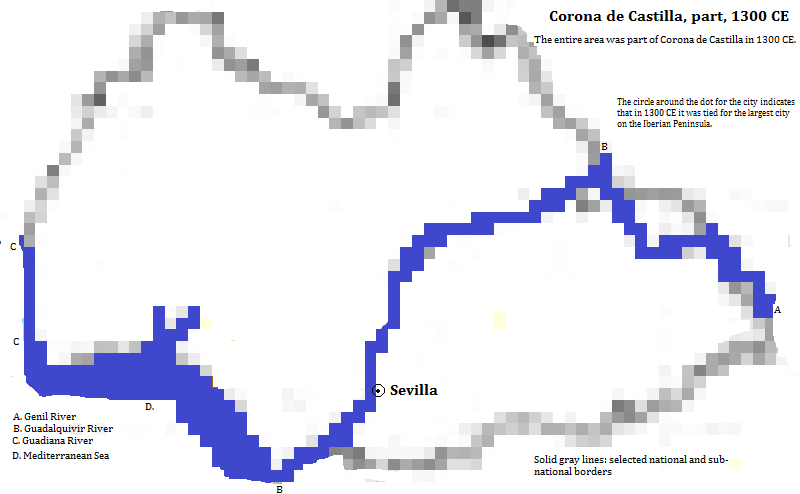
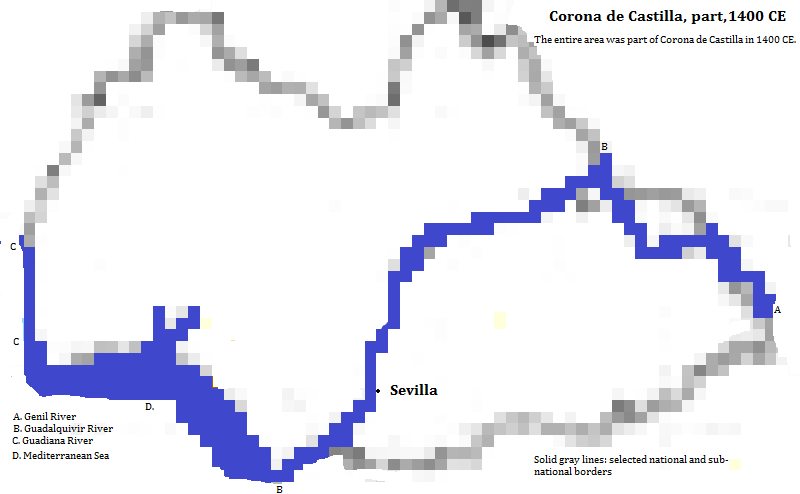

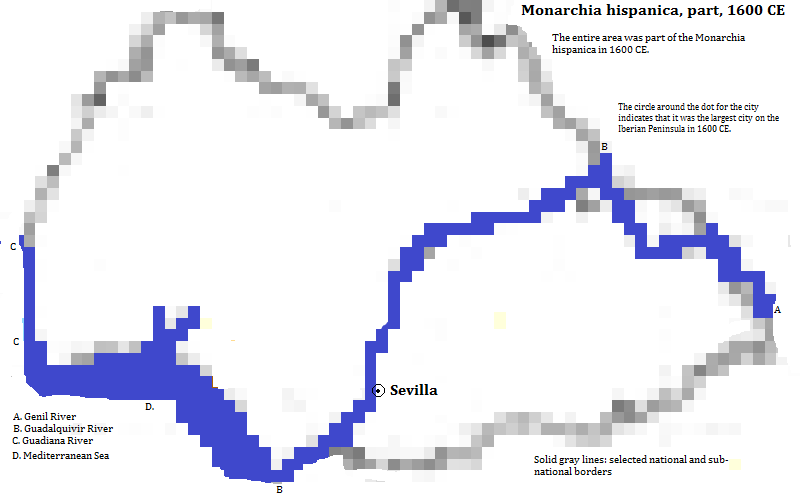

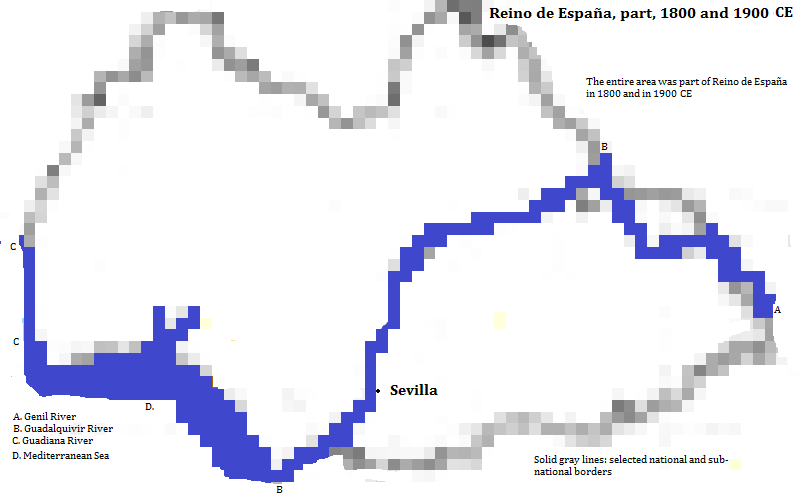
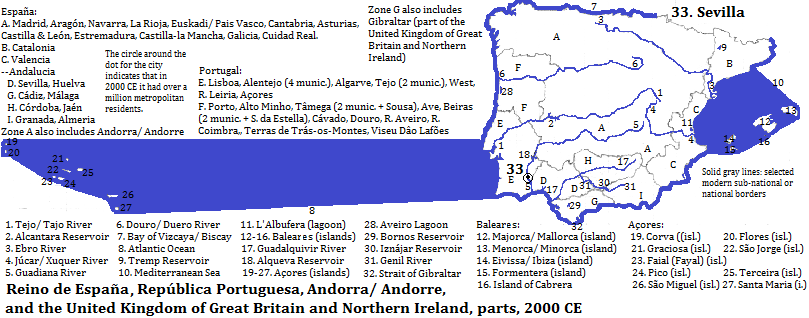
Footnotes
1. Seville in English.
2. 2011 figure from the side bar of https://en.wikipedia.org/wiki/Seville, accessed 12/28-30/2015.
3. Eurostat Larger urban zone (2014) column of https://en.wikipedia.org/wiki/List_of_metropolitan_areas_in_Europe, accessed 12/28/2015.
4. Cristóbal Colón in Spanish and Christopher Columbus in English.
5. Information on the world and local rank of the cathedral and the new tower comes from emporis.com, accessed 2/9/2016. The cathedral was built on the site of a mosque. The Torre (tower) Cajasol has 43 stories.
6. https://en.wikipedia.org/wiki/History_of_Seville, accessed 2/9/2016.
7. https://en.wikipedia.org/wiki/Seville, accessed 2/9/2016.
8. According to UNESCO, World Heritage Sites (Firefly Books, 2010), some columns are from a Visigothic Christian cathedral destroyed by Moslems, and the Giralda minaret from the mosque that replaced the Visigothic cathedral was incorporated into the Christian building that replaced the mosque.
9. Estimate in Tables of the World's Largest Cities, in Tertius Chandler, Four Thousand Years of Urban Growth, 2nd ed. (The Edwin Mellen Press, 1987). It was the largest city in the Iberian peninsula in 622, 1100, 1200 and 1600 and tied for largest in 1300 CE. He also listed it as far back as 1200 BCE, but I reject that. Tartessian culture, at least in its urbanized form, is not that old. Huelva discoveries of foreign pottery date from the tenth and eight centuries BCE and no other settlement rivals Huelva. See the 'Archaeological Discoveries' section of https://en.wikipedia.org/wiki/Tartessos, accessed by me 12/28/2015.
10. At the beginning of the year.











